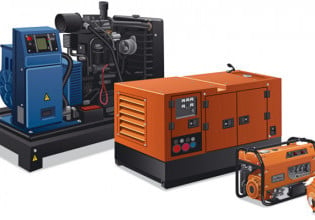A Look at Emerging Research in Electric Vehicle Battery Technologies
Researchers across the industry are exploring technologies to improve the performance of electric vehicles. In this article, we’ll look at a slew of recent research advancements in EV battery technologies, exploring alternative materials, design improvements, and safety features that promise to revolutionize the industry.
The electric vehicle (EV) industry is experiencing a surge in innovation, particularly in the realm of battery technologies. As the world grapples with climate change and seeks to reduce its reliance on fossil fuels, the spotlight increasingly falls on EVs as a sustainable mode of transportation. However, the success of this transition largely depends on the efficiency, safety, and sustainability of the batteries that power these vehicles.
Electric vehicle lithium battery pack and wiring connections. Image used courtesy of Adobe Stock
In response, the world of academia has been hard at work developing next-generation EV battery technologies.
Zinc-Air Batteries: A Sustainable Alternative
One notable development comes from Edith Cowan University researchers, who have been exploring the potential of zinc-air batteries as a viable alternative to the commonly used lithium-ion batteries in EVs. Whereas lithium-ion batteries have limitations related to cost, finite resources, and safety, zinc-air batteries offer low cost, environmental friendliness, and high theoretical energy density.
A graphical abstract of the zinc-air battery material. Image used courtesy of Arafat et al.
The research team recently made significant strides in redesigning zinc-air batteries using a combination of new materials such as carbon, cheaper iron, and cobalt-based minerals. This new design has resulted in high peak power density and ultra-long stability batteries. When the full prototype was tested, the researchers found their zinc-air battery yielded a minimal voltage difference of 0.77V, an elevated peak power density (PPD) of 228 mW/cm², and exceptional stability lasting over 950 hours, positioning it as highly viable for real-world applications.
Given the abundance of zinc, especially in countries like Australia, the researchers believe that zinc-air batteries could become a highly viable and reliable energy storage solution.
Thicker, Denser Electrodes for Advanced Batteries
Penn State researchers have recently developed a new fabrication approach that could lead to high-performance batteries with thicker and denser electrodes. Specifically, the goal is to make the electrodes and battery cells more compact, with a higher percentage of active components and a lower percentage of passive components.
The researchers used Spark Plasma Sintering (SPS) to create thicker electrodes, which improves energy storage capacity and density. This approach aims to enhance the vehicle's overall performance by reducing the battery package's weight and the energy required to move the electric vehicle. The result was the creation of a structural cathode featuring high electrode density (2.0–2.3 g cm³) and high mass loading (70–100 mg cm²).
The resulting electrodes demonstrated excellent performance metrics, including a high areal capacity of 8.6 mAh cm², a high volumetric capacity of 246 mAh cm³, and a gravimetric performance of 164 mAh g⁻¹. Additionally, the electrodes maintained 84% of their capacity after 200 cycles at a current density of 4.5 mA cm².
Solid-State Batteries: The Future of EVs?
A research team from NTNU's Department of Materials Science and Engineering recently investigated the potential of solid-state batteries in EVs. These batteries offer several advantages over lithium-ion batteries, including higher voltage, higher energy capacity, and greater safety due to their tolerance for temperature fluctuations.
The researchers found that a pulsed current protocol resulted in less dendrite growth. Image used courtesy of Reisecker et al.
The research focused on understanding the formation and propagation of lithium dendrites in all-solid-state batteries. Lithium dendrites are problematic because they can cause mechanical stress accumulation and lead to cell failure, particularly at current densities below the industry-recommended threshold of >5 mA/cm².
To address this issue, the researchers applied an MHz-pulse-current protocol, where electrical current is applied in pulses at a frequency in the megahertz range. This aimed to prevent low-current cell failure and enabled the all-solid-state lithium metal cells to operate at a higher current density of up to 6.5 mA/cm².
Lithium Iron Phosphate Batteries: Closing the Gap
Finally, Next Energy Inc. recently made significant advancements in lithium iron phosphate (LFP) battery technology.
Specifically, the company’s Aries II battery pack is close to achieving energy density parity with nickel cobalt manganese (NCM) batteries, the most commonly used in EVs today. Slated to launch in 2025, the Aries II battery pack is considered safer and more durable than conventional NCM batteries and has the potential to double the range of electric vehicles.
Battery Research Takeaways
The electric vehicle industry is on the cusp of a revolution driven by groundbreaking research in battery technologies. From exploring alternative materials like zinc and solid-state components to redesigning electrodes for higher performance, these advancements promise to make EVs more efficient, safer, and more sustainable. As these technologies move closer to commercialization, they all have the potential to accelerate the global transition to sustainable transportation significantly.









